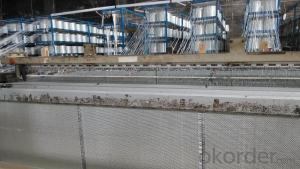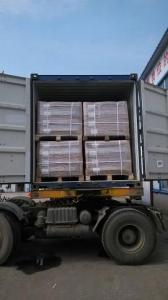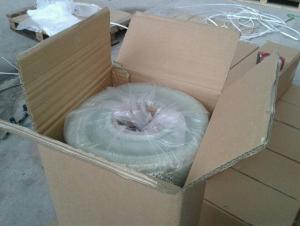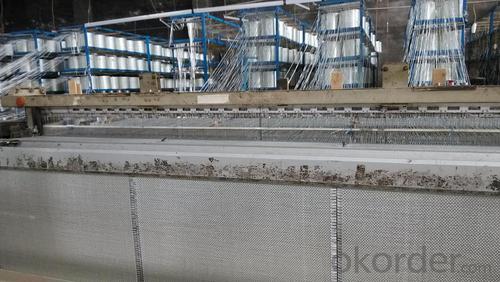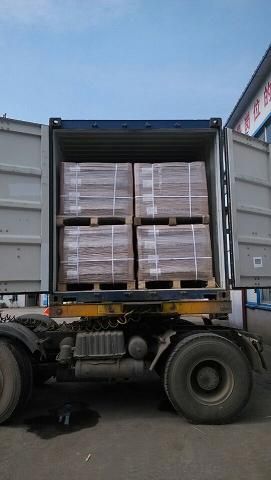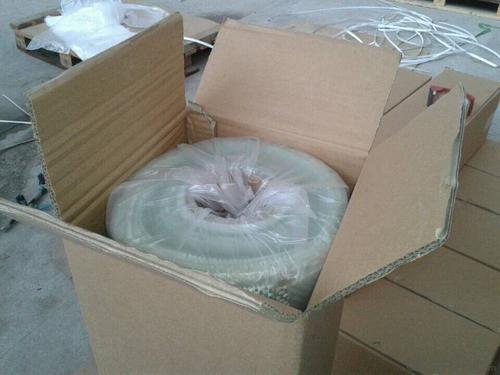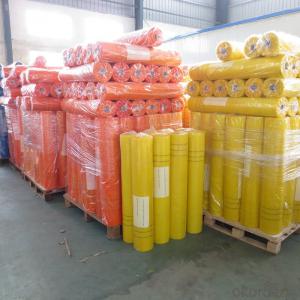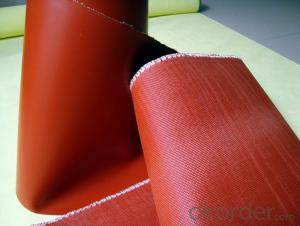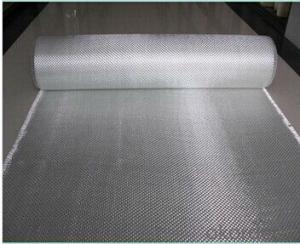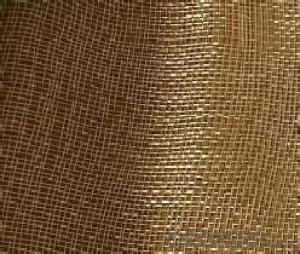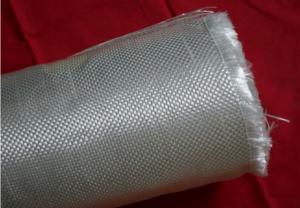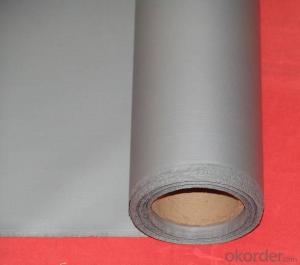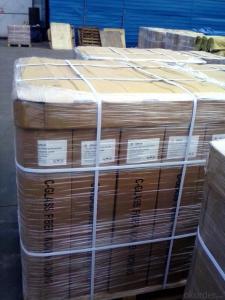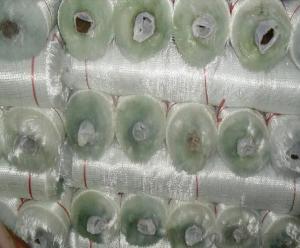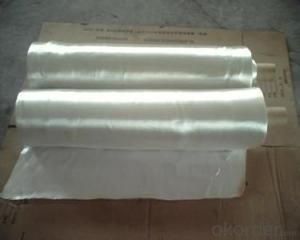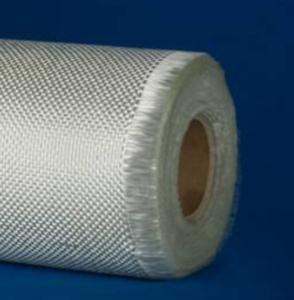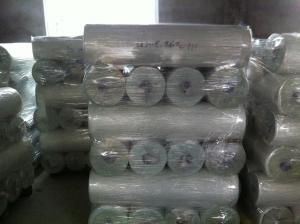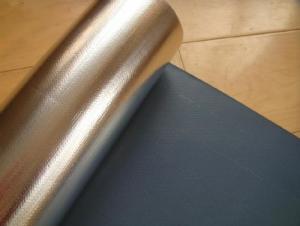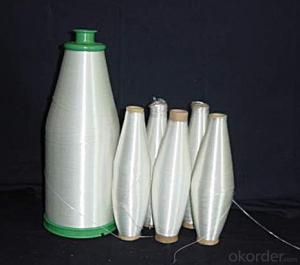Teflon Coated C Glass Fiber Woven Fabrics
- Loading Port:
- China Main Port
- Payment Terms:
- TT or LC
- Min Order Qty:
- 17600 kg
- Supply Capability:
- 176000Kg Per Month kg/month
OKorder Service Pledge
OKorder Financial Service
You Might Also Like
1.Brief Introduction
C Glass fabrics are bidirectional fabric made by interweaving direct rovings.
C Glass fabrics are compatible with unsaturated polyester, vinyl ester, epoxy and phenolic resins.
C Glass fabrics are a high performance reinforcement widely used in hand lay up and robot processes to manufacture boats, vessels, plane and automotive parts, furniture and sports facilities.
2.Product Features
Warp and weft rovings aligned in a parallel and flat manner, resulting in uniform tension
Densely aligned fibers, resulting in high dimensional stability and making handling easy
Good moldability, fast and complete wet out in resins, resulting in high productivity
Good mechanical properties and high strength of parts
3.Product Specifications
Property | Area Weight | Moisture Content | Size Content | Width |
(%) | (%) | (%) | (mm) | |
Test Method | IS03374 | ISO3344 | ISO1887 | |
CWR200 | ±7.5 | ≤0.15 | 0.4-0.8 | 20-3000 |
CWR270 | ||||
CWR300 | ||||
CWR360 | ||||
CWR400 | ||||
CWR500 | ||||
CWR600 | ||||
CWR800 |
Special specification can be produce according to customer requirements.
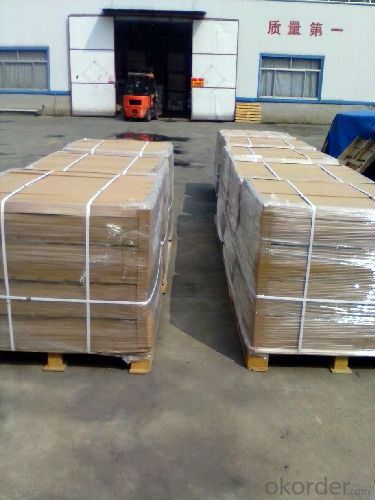
4.FAQ
Packaging:
Each woven roving is wound onto a paper tube which has an inside diameter of 76mm and the mat roll has a diameter of 220mm. The woven roving roll is wrapped up with plastic film,and then packed in a cardboard box or wrapped up with kraft paper. The rolls can be horizontally placed. For transportation, the rolls can be loaded into a cantainer directly or on pallets.
Storage:
Unless otherwise specified,It should be stored in a dry, cool and rain-proof area. It is recommended that the room temperature and humidity should be always maintained at 15℃~35℃ and 35%~65% respectively.
- Q: Can fiberglass fabrics be used for sports or recreational equipment?
- Yes, fiberglass fabrics can be used for sports or recreational equipment. Fiberglass is known for its high strength and durability, making it an ideal material for various sports and recreational applications. It is commonly used in the construction of equipment such as kayaks, canoes, surfboards, skateboards, and even sporting goods like hockey sticks and golf club shafts. The lightweight nature of fiberglass also contributes to its popularity in these industries, as it allows for improved maneuverability and performance. Additionally, fiberglass fabrics can be molded into different shapes and sizes, providing versatility in the design of sports and recreational equipment. Overall, fiberglass fabrics are a reliable and widely-used material for the manufacturing of sports and recreational equipment.
- Q: How is fiberglass fabric used in the production of composites?
- Fiberglass fabric is commonly used in the production of composites as it provides strength, durability, and flexibility to the final product. It is typically impregnated with resin and then layered or molded with other materials such as carbon fiber, kevlar, or epoxy to form a composite structure. The fiberglass fabric acts as a reinforcement, adding stiffness and structural integrity to the composite while also offering resistance to impact, heat, and corrosion. Overall, fiberglass fabric plays a crucial role in enhancing the mechanical properties of composites, making them suitable for various industries including automotive, aerospace, construction, and marine applications.
- Q: Can fiberglass fabrics be used for insulation in appliances?
- Yes, fiberglass fabrics can be used for insulation in appliances. Fiberglass fabrics are made from woven glass fibers that are highly heat-resistant and have excellent insulation properties. They can effectively trap and retain heat, making them ideal for insulating appliances such as ovens, stoves, and refrigerators. Additionally, fiberglass fabrics are lightweight, flexible, and easy to work with, allowing them to be easily installed in various appliance designs. They also have good durability and can withstand high temperatures without degrading or losing their insulation properties. Overall, fiberglass fabrics are a reliable and efficient choice for insulation in appliances.
- Q: Can fiberglass fabric be used for making aircraft parts?
- Aircraft parts can indeed be made using fiberglass fabric. Fiberglass, being a material that is both strong and lightweight with excellent mechanical properties, is well-suited for various uses in the aerospace field. Its usage in constructing aircraft parts such as fuselages, wings, fairings, and interior components is quite common. To manufacture fiberglass fabric, thin strands of glass fibers are woven together, resulting in a material that is flexible and adaptable. It possesses a high strength-to-weight ratio, resistance to corrosion, and exceptional thermal insulation properties. These particular characteristics make fiberglass fabric an excellent choice for aircraft production, as it aids in reducing the overall weight of the aircraft while maintaining structural integrity. Moreover, fiberglass fabric is easily moldable into intricate shapes, enabling the production of aerodynamically efficient aircraft components. It can also be impregnated with resins to create a composite material, which further enhances its strength and durability. However, it is crucial to note that fiberglass alone may not suffice for all aircraft parts. In certain instances, it may be used in conjunction with other materials or employed as a reinforcement layer in composite structures. The selection of materials for aircraft parts must take into account the specific requirements and regulations of the aviation industry. Nonetheless, fiberglass fabric remains a viable option for certain applications.
- Q: Can fiberglass fabric be sewn?
- Yes, fiberglass fabric can be sewn. However, it is important to use special sewing techniques and equipment designed for working with this type of fabric, as it is more rigid and has a tendency to fray easily.
- Q: What are the different weights per square meter available for fiberglass fabric?
- The weights per square meter available for fiberglass fabric can vary depending on the specific application and intended use. However, common weights for fiberglass fabric range from 100 grams per square meter (gsm) to 900 gsm.
- Q: How is fiberglass fabric sewn?
- Fiberglass fabric is typically sewn using a heavy-duty sewing machine equipped with a strong needle and thread. The process involves aligning the edges of the fabric panels and feeding them through the machine, allowing the needle to pierce through the fabric layers and create stitches. It is important to use a sharp needle specifically designed for sewing fiberglass fabric, as this material can be tough and abrasive, potentially causing regular needles to break or become dull quickly. Additionally, using a sturdy thread, such as a polyester or nylon thread, is crucial to ensure the durability and longevity of the seams. Sewing fiberglass fabric requires skill and precision, as the material can be slippery and difficult to handle. It is recommended to practice on scrap pieces before attempting to sew large or complex projects.
- Q: Can fiberglass fabric be used for insulation in transportation vehicles?
- Yes, fiberglass fabric can be used for insulation in transportation vehicles. It is a commonly used material for its excellent thermal insulation properties, fire resistance, and lightweight nature, making it ideal for insulating the walls, ceilings, and floors of various transportation vehicles such as cars, boats, and aircraft.
- Q: Is fiberglass fabric resistant to chemicals used in agriculture?
- Yes, fiberglass fabric is generally resistant to the chemicals used in agriculture.
- Q: Is fiberglass fabric resistant to chemicals in mining operations?
- Fiberglass fabric, in general, exhibits resistance to chemicals commonly encountered in mining operations. Its exceptional chemical resistance is well-known, making it a preferred option for diverse industrial uses, such as mining operations. It possesses high resistance against a wide array of chemicals typically found in mining environments, including acids, alkalis, solvents, and corrosive substances. This resistance guarantees the fabric's durability and unaffected state even after exposure to chemicals, offering a dependable and enduring solution for protective clothing, equipment covers, and other mining operation applications.
Send your message to us
Teflon Coated C Glass Fiber Woven Fabrics
- Loading Port:
- China Main Port
- Payment Terms:
- TT or LC
- Min Order Qty:
- 17600 kg
- Supply Capability:
- 176000Kg Per Month kg/month
OKorder Service Pledge
OKorder Financial Service
Similar products
Hot products
Hot Searches
Related keywords
